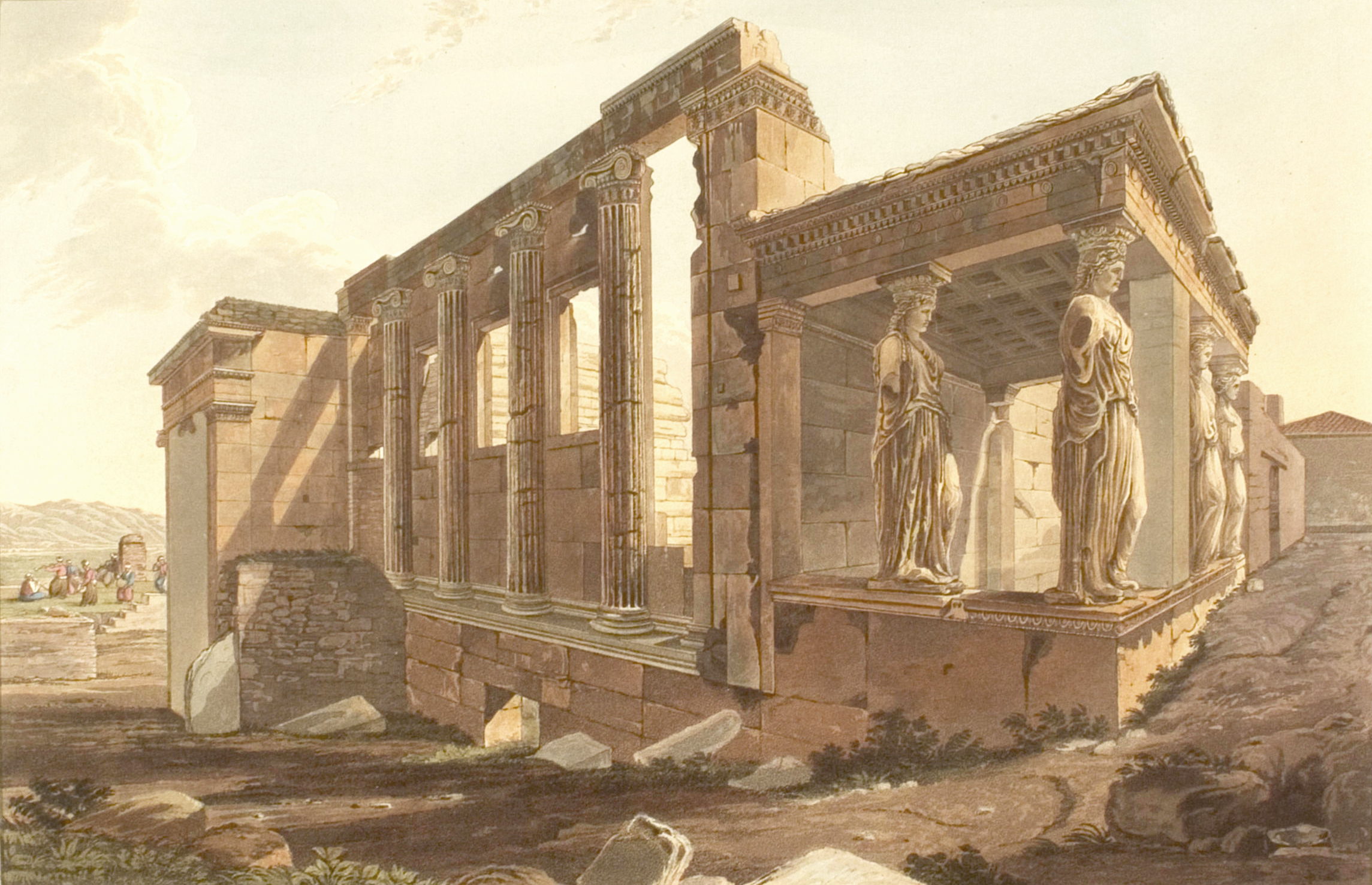.
The Erechtheion held deep religious significance for the Athenians and their city’s origins.
It was named after King Erechtheus who had established the city.
Designed by the architect Mnesicles, the temple was completed in 406 BCE.
.
The Ionic Style of Classicism
Just like at the Parthenon, Phidias created all the sculptures for the frieze surrounding the outer walls of the Erechtheion.
A dark limestone acted as the backdrop for figures in white marble constituting the frieze.
.

.
The temple is built on an uneven site in the north of Acropolis.
The western cella and the northern porch are 9 feet lower than the entrance portico to the east.
.
Architectural Features of the Classical Greek Temple
All the columns bounding its 3 sides bear Ionic capitals.
The eastern and western facades also have pediments forming a triangle above the row of columns.
Colourful glass beads and ornaments of bronze once embellished the columns.
.
Porch of the Caryatids
To the south lies, the Porch of the Caryatids widely recognised for its distinct craftsmanship.
To discover more about Caryatids, read this post.
The lack of symmetry in the arrangement of spaces is because of the need to commemorate several key mythological phenomena within a single building.
.
Athena Polias
The eastern cella housed the most important relic: an effigy of Athena Polias meaning the Protectress of the City.
It was made of olive-wood and believed to have descended directly from the realm of gods.
.
The citizens relied on Athena Polias for the safety of Athens.
The cella on the opposite side was reserved for Poseidon, who was the old patron of the city.
.

.
Athens’ Myth of Origins
According to Greek myth, Athena had challenged Poseidon’s supremacy over Athens.
They were to contend with each other, leaving the final judgement in King Cecrops’ hands.
.
Poseidon struck his trident into the ground where the temple was later constructed.
This caused a spring to appear from which salted water began to flow.
It meant a prosperous sea-trade for the city-state.
.
Athena, on the other hand, hit her spear down which made an olive tree to shoot up, providing the people with wood and nourishment.
Cecrops gave preference to the gift from the goddess and she won Athens over from the previous deity. Cecrops was also buried within the temple’s enclosure.
.
.
Goddess Athena’s Serpent
Athena’s serpent was known to dwell beneath the Erechtheion and priestesses were assigned to serve it honey-cakes regularly.
If the serpent ever left a cake uneaten, it spelled doom for the city. This had purportedly happened before the Persians attacked in 480 BCE.
.

.
The Peplos
The priestesses of the Erechtheion were also responsible for the ritual bathing and dressing of Athena Polias.
The Caryatids adorning the facade were an architectural reminder of the religious duties performed by the priestesses.
The Panathenaic procession brought a newly woven peplos for her, at the festival every year.
.
The Golden Lamp
Callimachus, the sculptor, had designed a golden lamp which burned in front of the idol all year long without any replenishment.
Read here about how he also invented the Corinthian order.
.

.
.



.
.
Select your preferred language from the ‘Translate’ menu below.
.





That story is very pure without more important data about owners of that family shrine – Boutaday tribe, ancestral priests of Athena an Poseidon cults.
LikeLike